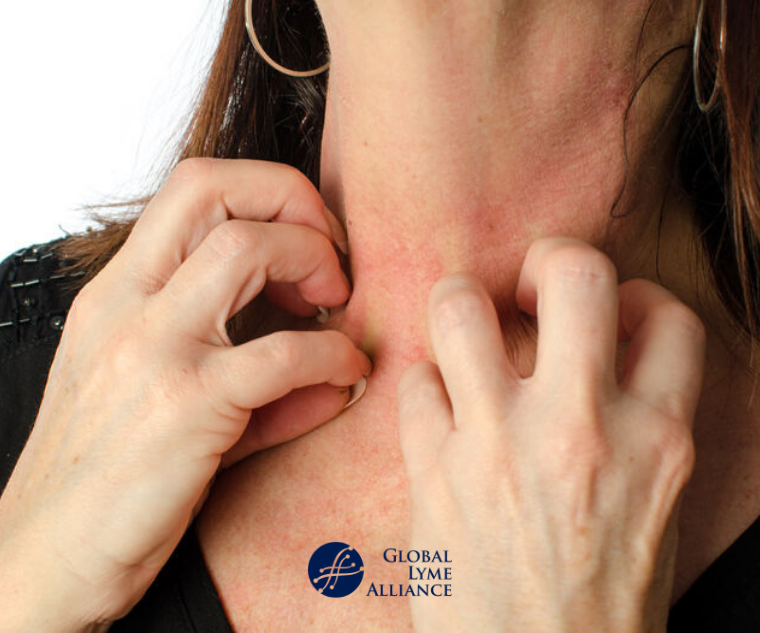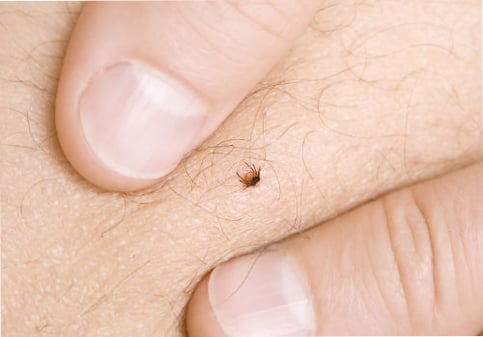Discover the Perks of Joining the Lymecare Alliance Today
Discover the Perks of Joining the Lymecare Alliance Today
Blog Article
Lyme Condition Awareness-- Know the Manifestations and Remain Protected
Lyme disease continues to be a substantial public wellness issue, especially in regions where ticks are widespread. What details steps can individuals take to protect themselves versus this often-overlooked condition, and exactly how can areas enhance their general action?
Comprehending Lyme Illness
Lyme disease, a common tick-borne disease, is triggered by the microorganism Borrelia burgdorferi. This condition is mainly sent to humans with the bite of infected black-legged ticks, generally called deer ticks. The geographical circulation of Lyme illness is greatly focused in the northeastern, north-central, and Pacific coastal regions of the USA, although situations have actually been reported in various other areas too.
The life cycle of the tick plays an important function in the transmission characteristics of Lyme illness. Human exposure to ticks is especially elevated in grassy or woody areas, especially during warmer months when ticks are most energetic.
Comprehending the ecology of Lyme condition is crucial for efficient prevention strategies. Recognition of tick environments and habits can considerably reduce the probability of bites. In addition, public education on correct tick removal strategies and the value of individual safety steps can help minimize the danger of contracting this complex and potentially devastating disease.
Common Signs And Symptoms to Recognize
Recognizing the usual signs and symptoms of Lyme disease is essential for early diagnosis and therapy. The preliminary manifestation often consists of a characteristic skin breakout referred to as erythema migrans, which looks like a red round spot with a central clearing, appearing like a "bull's- eye." This rash usually creates within 3 to one month after a tick bite and can differ in dimension.
In addition to the rash, people might experience flu-like signs, including high temperature, chills, fatigue, muscle mass aches, and joint pain. These signs and symptoms can be deceptive, as they are usual to lots of various other health problems. If left without treatment, Lyme illness can advance to much more extreme indications, consisting of neurological problems such as meningitis, face palsy, or cognitive disabilities.
Joint inflammation, especially in the knees, is one more substantial signs and symptom that might arise in later phases. Some individuals report enhanced exhaustion or relentless frustrations. Recognition of these symptoms is essential, as very early detection can result in efficient treatment, normally including prescription antibiotics. Timely intervention can prevent the development of the illness and lower the danger of lasting complications. Alertness is key in recognizing and dealing with the signs linked with Lyme disease.

Threat Aspects and Transmission
Comprehending the threat factors and settings of transmission related to Lyme condition is important for reliable avoidance. Lyme disease is mostly sent through the bite of contaminated black-legged ticks, frequently called deer ticks. These ticks grow her explanation in woody, verdant, and brushy locations, making outside tasks in such settings a substantial threat element for transmission.
Individuals who participate in outside entertainment tasks such as outdoor camping, gardening, or hiking are more probable to experience these ticks. Furthermore, residing in or visiting areas where Lyme condition is native to the island, consisting of parts of the northeastern, north-central, and Pacific seaside areas of the USA, enhances exposure danger. Certain occupations, such as farming, landscaping, and forestry, also posture increased threats due to long term exterior direct exposure.
In addition, the life process of the tick, which requires specific ecological conditions, affects transmission dynamics. Aspects such as environment modification, which affects tick habitats and populations, can better worsen threat. Understanding these variables is vital for people to acknowledge their potential exposure and take required precautions to reduce their threat of contracting Lyme condition.
Reliable Prevention Methods
Frequently applying effective prevention methods is important for reducing the danger of Lyme condition. The first line of protection is to stay clear of areas recognized for high tick populations, especially wooded and grassy environments. When exterior activities are inevitable, using safety garments is crucial. Long sleeves, long pants, and snugly woven textiles can assist minimize skin direct exposure. In addition, light-colored clothing makes it simpler to identify ticks.

Enlightening family members and close friends regarding these prevention methods cultivates area recognition and caution, further lowering the chance of Lyme illness transmission. By adopting these actions, individuals can effectively protect themselves from the dangers linked with Lyme condition.
Importance of Very Early Discovery
Very early detection of Lyme illness substantially affects therapy results and can protect against the progression of the disease. The early phases of Lyme illness are typically marked by flu-like symptoms, consisting of fever, fatigue, and the particular erythema migrans breakout.
On the other hand, delayed diagnosis can cause more extreme manifestations of the condition, consisting of neurological and cardiac difficulties, which can be much more challenging to treat and might lead to long term health concerns. Late-stage Lyme condition might require prolonged antibiotic treatment and can cause persistent signs, dramatically impacting other lifestyle.
Overall, enhancing awareness around the early indications of Lyme illness is essential for effective monitoring and prevention of even more major health and wellness repercussions. Early treatment is not only advantageous for the specific yet likewise crucial in decreasing the general concern of Lyme disease in the neighborhood.
Conclusion
In recap, raising awareness of Lyme Illness is necessary for advertising early detection and reliable prevention. Recognizing common signs and symptoms, such as the particular "bull's- eye" rash and flu-like indicators, can facilitate prompt clinical intervention. Understanding danger elements and applying safety nets, consisting of protective clothes and regular tick checks, is essential for decreasing the chance of transmission. Eventually, a cumulative effort to stay notified and vigilant against Lyme Illness can enhance area health and decrease the influence of this potentially major health problem.
Lyme illness stays a significant public wellness concern, specifically in regions where ticks are widespread.The life cycle of the tick plays a crucial role in the transmission dynamics of Lyme illness.Recognizing the danger factors and settings of transmission linked with Lyme disease is vital for click efficient avoidance. Lyme illness is mostly transferred with the bite of infected black-legged ticks, frequently known as deer ticks. Comprehending these aspects is vital for individuals to identify their prospective direct exposure and take required preventative measures to minimize their risk of contracting Lyme disease.
Report this page